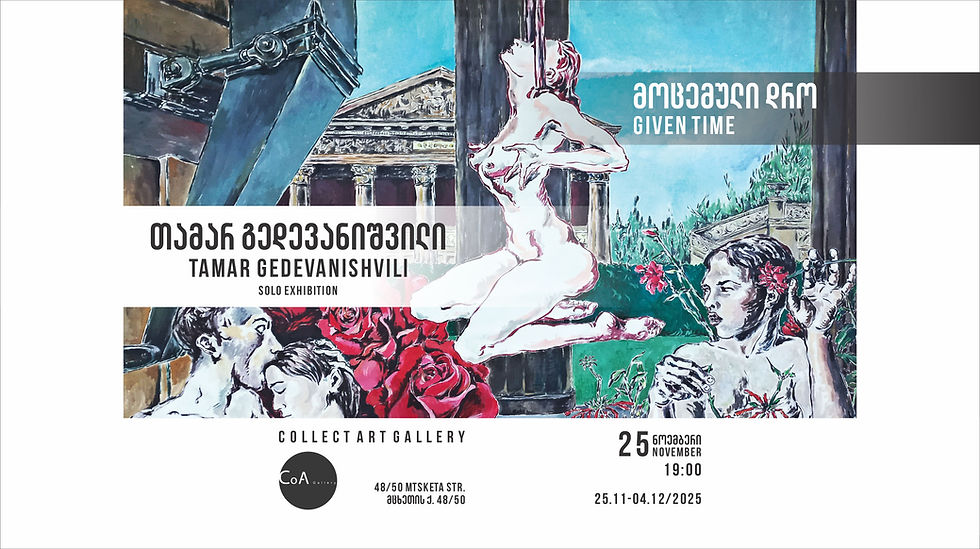Lewis Andrews/ The Abstract Dialogue
- Tamar Khelashvili
- Mar 24
- 2 min read
Lewis Andrews moved to Leeds in 2016 to study a BA(Hons) in Fine Art at Leeds Arts University. After graduating in 2019, Lewis continues to work in Leeds. In 2022, Lewis completed his Postgraduate Fine Arts Degree also at Leeds Arts University, graduating with a Masters Degree in the Creative Arts. During his Master’s Degree, Lewis’s practice became deeply focused on the methodology of translating information and data from sources within science into artworks. Lewis has continued to work and build upon this method in his work constructing a theory of working called ‘The Informative Encounter’.
Since 2019, Lewis has participated in 100+ exhibitions across the UK and internationally with many notable achievements. Lewis held his first solo show '186,000mi/s' whilst studying at Leeds Arts University in 2018 at Wharf Chambers, Leeds, UK. Lewis was one of the artists picked to participate in the Aon Community Art Awards program 2019 running through 2021 with his oceanic sublime photography work displayed in Aon Headquarters, London. In November 2020, Lewis was selected to participate in the Mayes Creative Watching the Sun: Virtual Residency alongside other artists interested in astronomy and ancient astrology. Lewis participated in two more virtual arts-science residences with Mayes Creative. work from the residency was included in a publication that now resides within the Royal Astronomy Society Archive. Lewis joined Mayes Creative again for their January 2024 residency in the Cot Valley, Cornwall, UK. Lewis has formed strong relations with the Brazilian art organisation Artlymix and the Georgian-based gallery Collect Art. As of present, Lewis has featured in 16+ exhibitions with Artlymix in Sao Paulo, Brazil and 12+ of Collect Art's publications & Digital exhibitions as of July 2024 to name a few of his achievements.

Nova
The ‘Nova’ series of drawings offers the viewer a glimpse into the final moments of a supergiant star’s life cycle. Some offer viewpoints of the supergiant alive and continuing the nuclear fusion process powering the star whilst others offer the viewpoint of the moments just after the supernova event. Following on a similar approach to the earlier ‘Cosmos’ drawings, the ‘Nova’ series incorporates drawing materials which on an atomic level, first originated from these supergiant stars as well as increasing the scale of the drawing. The contrasted blacks and whites attempt to capture and visualise the vast amounts of energy generated by these events and encapsulate them within each drawing.
These drawings are created using the remnants of dead stars. They serve as a monument to these fallen giants with carbon being the richest element within the drawings. The drawings break down distance and time to echo the moments where death and the seeds of life meet. Bridging the vast distances between us and these galactic furnaces to reaffirm that we are not just part of the cosmos but are actively part of it. The carbon atoms in these drawings, the carbon atoms in your body, the carbon in our machines, and the carbon in all other living beings can be traced back to stars that lived light years above your heads.




Comments